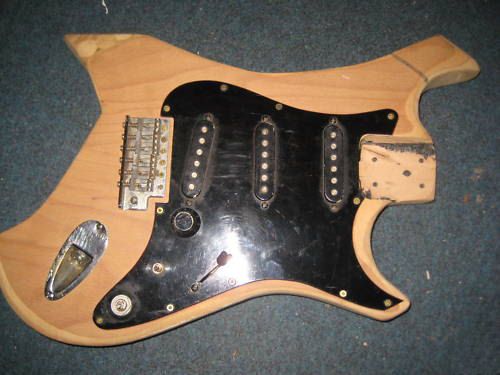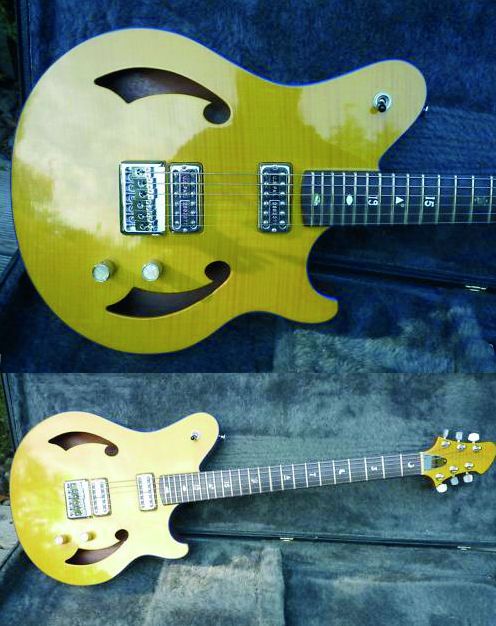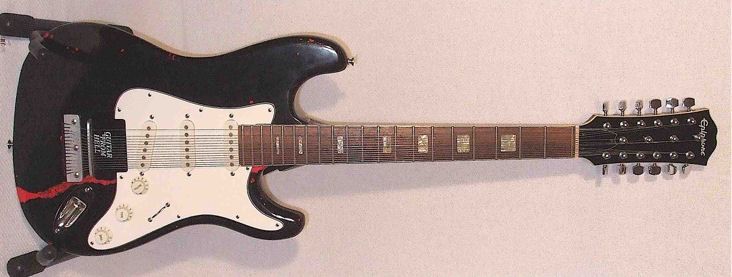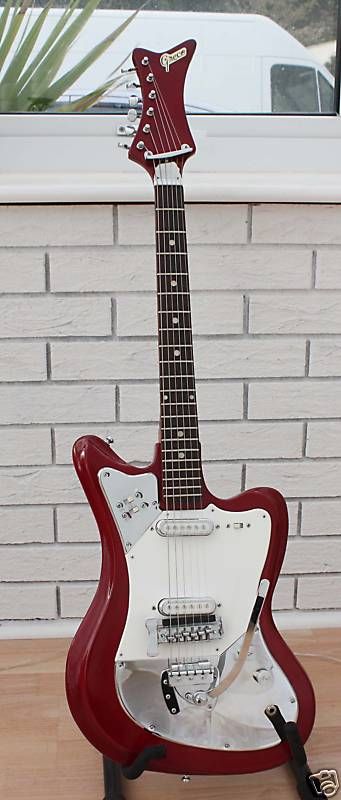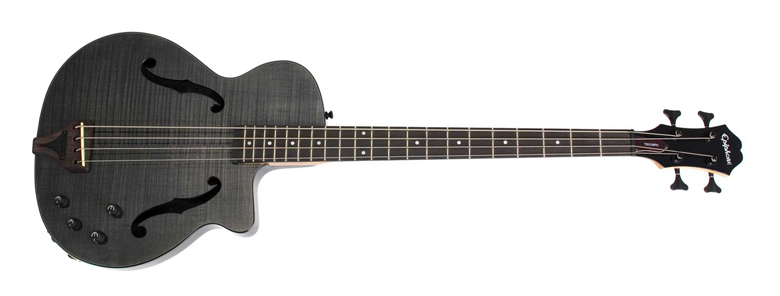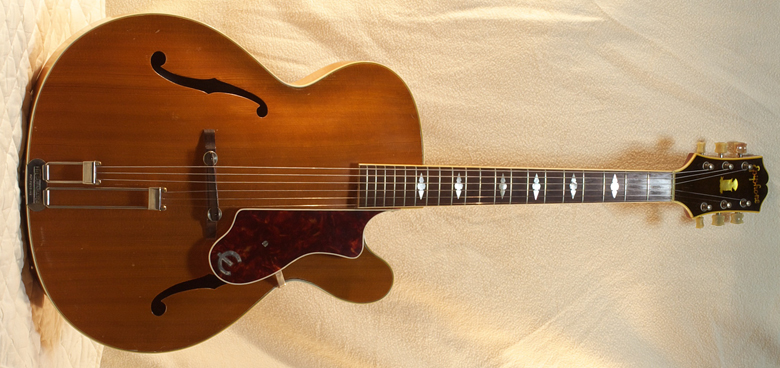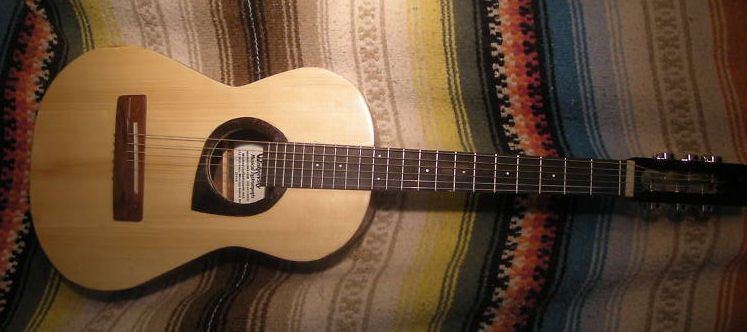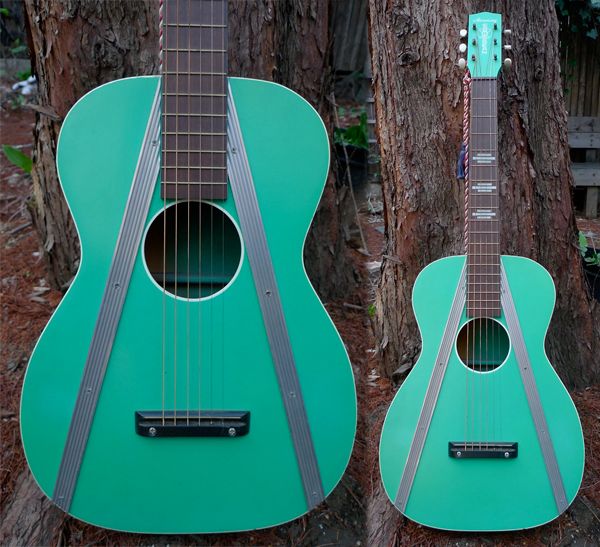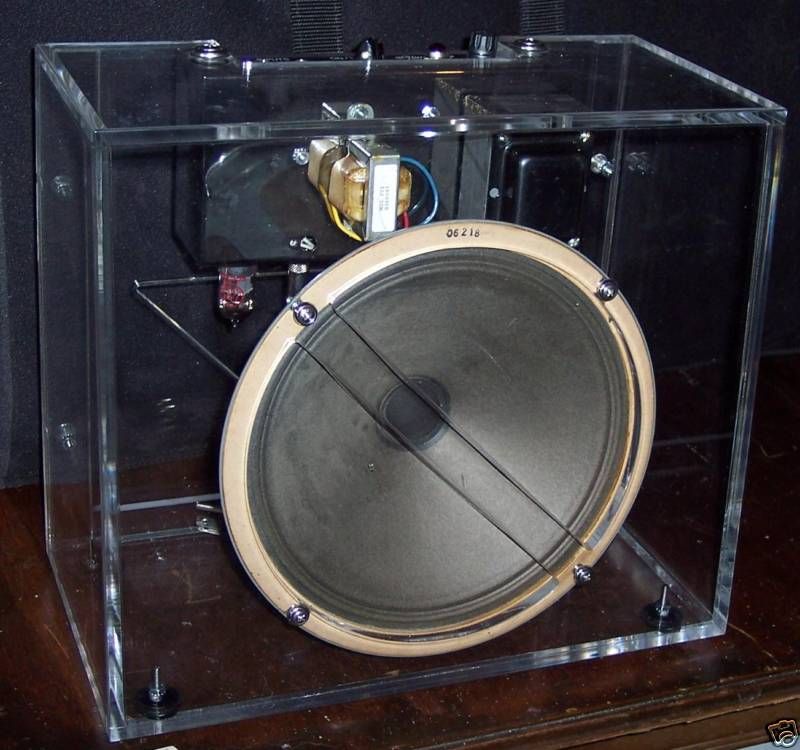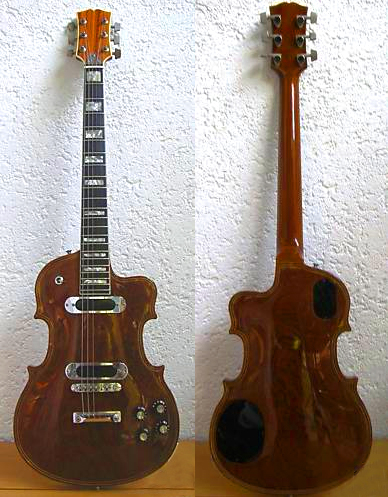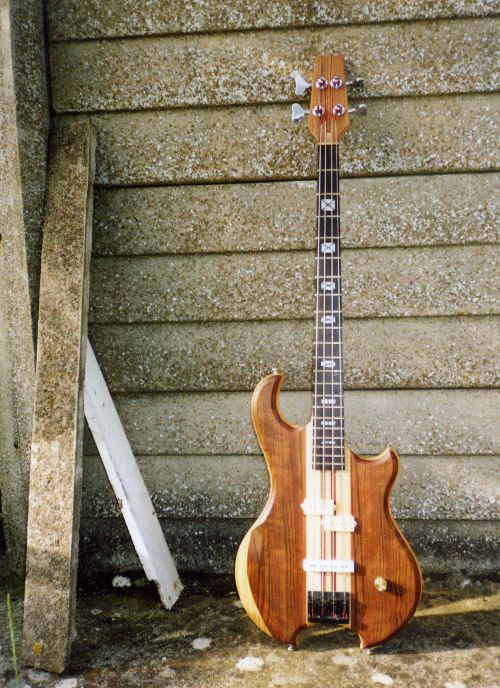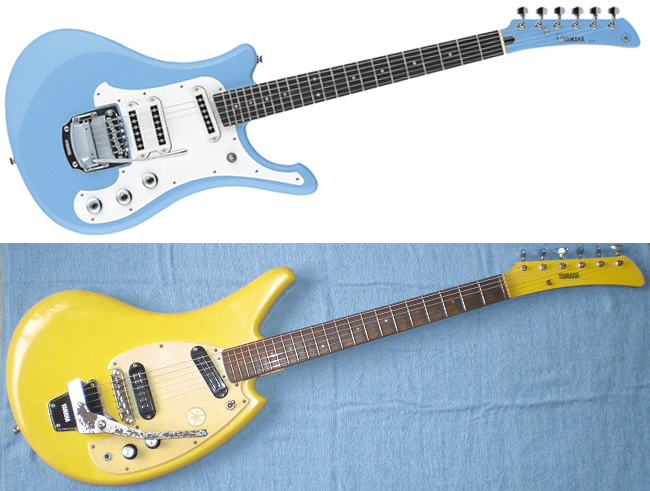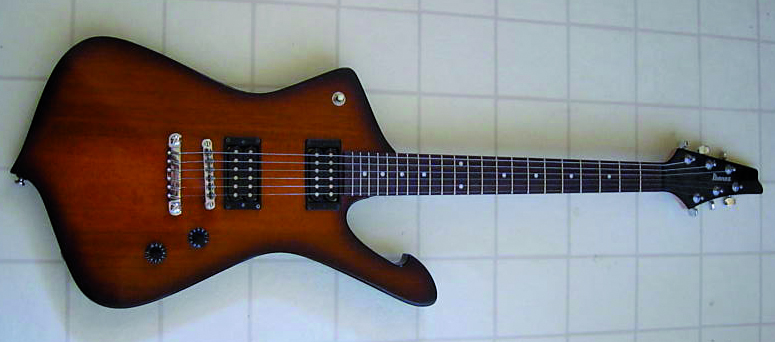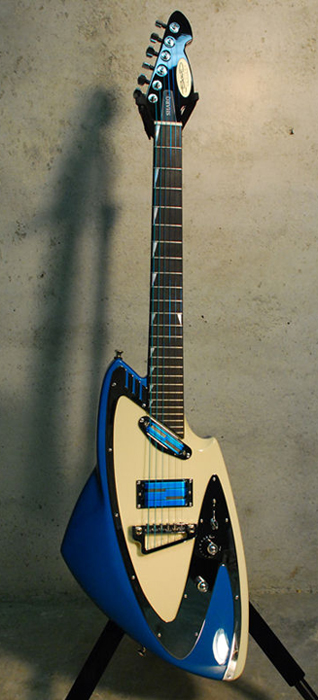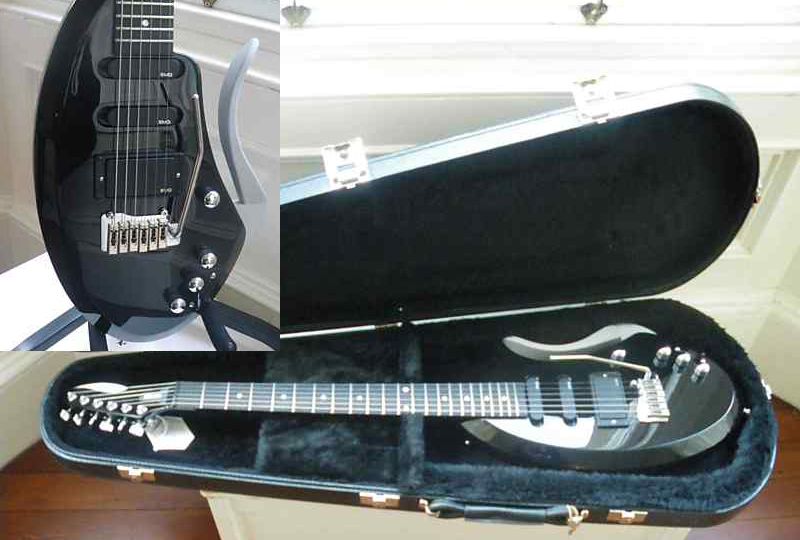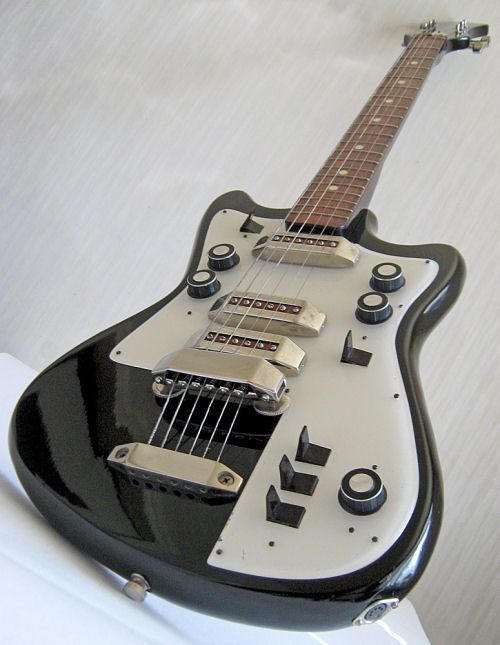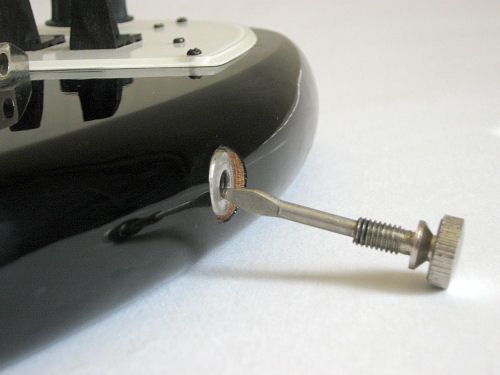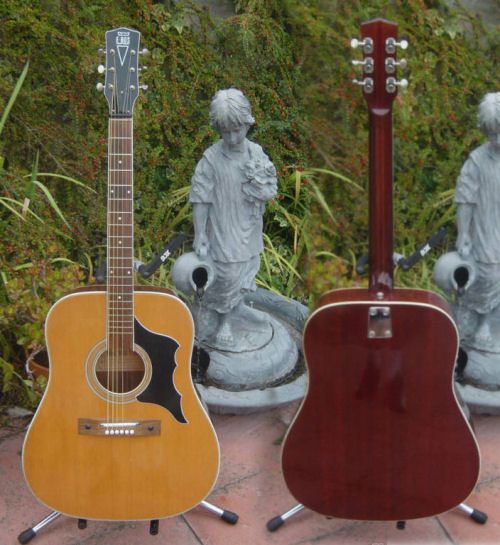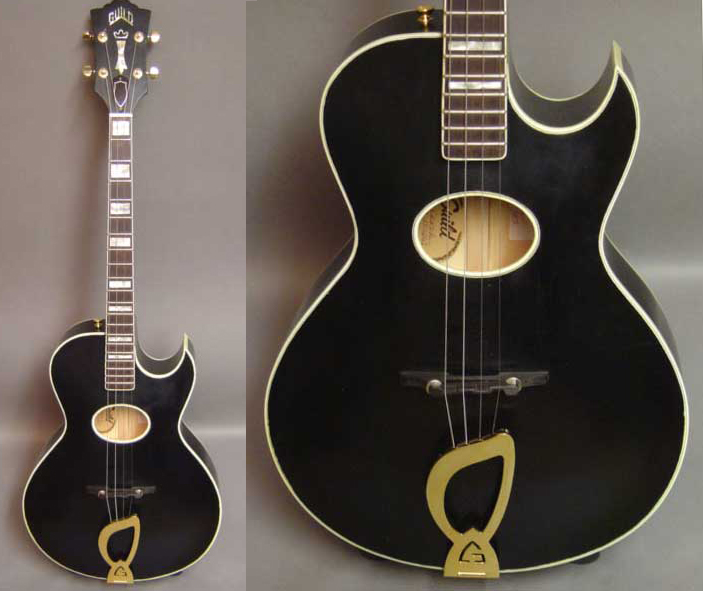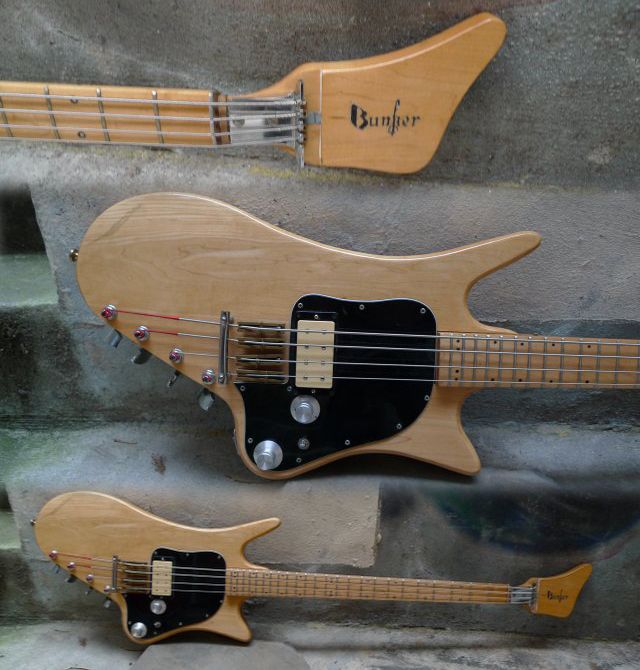 This Bunker Bass is an interesting one. It has the appearance of a Gibson Grabber/Ripper with some serious body surgery. It's interesting to note that the tuners are on the body beyond the bridge, predating headless designs such as the Steinberger by several years. Unlike the Steinberger, the Bunker Bass does have a headstock, although this would seem to be purely for aesthetical purposes.
This Bunker Bass is an interesting one. It has the appearance of a Gibson Grabber/Ripper with some serious body surgery. It's interesting to note that the tuners are on the body beyond the bridge, predating headless designs such as the Steinberger by several years. Unlike the Steinberger, the Bunker Bass does have a headstock, although this would seem to be purely for aesthetical purposes.Additional (4 Nov 2009): I found some more information in an article in the My Rare Guitars newsletter, as follows:
...Dave Bunker of Puyallup, Washington, began to turn his thoughts to a better guitar idea. Bunker, born in 1935, began playing guitar in around 1949 and in around 1951 started teaching in Puyallup. Then in 1955 he saw the traveling demonstration show put on by the great tapping guitarist Jimmie Webster and Dave adopted that technique. Conventional guitar design is not optimized for tapping, so naturally Bunker began to experiment and in around 1961 started making his own guitar designs. One of his ‘60s inventions was the idea of the “tension-free” neck. Basically this consisted of a heavy brass nut fixed to a thick brass bar that was attached to another block of metal in the body. A wooden neck was routed out and slipped over this brass core. Strings were anchored into the nut and stretched down to tuners on the butt end of the guitar. The brass neck core took all the tension of the strings, keeping the wooden neck free of any tension whatsoever. Like Les Paul’s “log,” Bunkers guitars often had variously shaped wings that could be bolted on to give more of an illusion of “guitar,” but he was getting down to the bare minimum!Off with her head!, by Michael Wright, the Different Strummer
G L Wilson
NB: There are a lot of blogs STEALING content and bandwidth. If you read this anywhere else but on guitarz.blogspot.com then you are reading a blog that STEALS content. Please support original bloggers!

